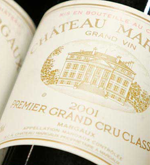A Cru Bourgeois
Cru Bourgeois Classification
The name Bourgeois back to the time when the English were settled in the Bordeaux region. The bourgeois were inhabitants of the "bourg" of Bordeaux, a town of merchants and craftsmen. During the period of English rule, they acquired rights and privileges, including exemption from taxes on the sale of the wines from their vineyards both locally (Guyenne) and abroad . By the fifteenth century, enriched by their international commerce, the bourgeois of Bordeaux were able to acquire the finest properties in the region, which were initially referred to as the "Crus des Bourgeois" and then simply the "Crus Bourgeois"
Todays the Crus Bourgeois are part of Bordeaux’s wine heritage. Some properties existed long before the creation of the 1855 classification and many are still here today in a demonstration of the strength of the traditional "Cru Bourgeois" description.The Crus Bourgeois form a big family that brings together vineyards with widely differing profiles, and very different terroirs (eight prestigious AOCs : Médoc, Haut-Médoc, Listrac-Médoc, Moulis en Médoc, Margaux, Saint Julien, Pauillac and Saint Estèphe), led by a variety of producers, many of whom have their origins in the Médoc, but who also come from other countries and regions, bringing dynamism and new ideas.
This is the strength of this family : diversity in unity. The vineyards share the same region and the same history, but each has its own character and offers the consumer something different.This diversity can be found at every level : winemaking techniques, flavour, price, reputation, marketing, approaches to wine tourism, communication, presence on social media, etc.
Ultimately, the members of this family, the largest in the Bordeaux region, share the same ambition : the defence of the traditional "Cru Bourgeois" classification, in a world in which the preservation of expertise in the creation of quality has become a symbol of luxury.









